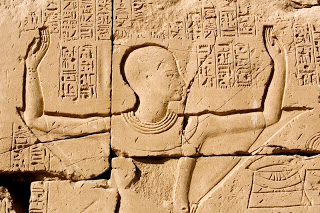- In archaeology radioisotope carbon-14 is used to study and estimate the age of ancient artifacts. This method is named as the radiocarbon dating.
- Radiocarbon dating can be used to estimate the age of organic materials, such as wood and leather, up to about 58,000 to 62,000 years.


Example:
A piece of wood found in a cave of an archaeology site has a carbon-14 activity 25% of the activity from a live plant. Estimate the age of the wood. [Half-life of carbon-14 = 5730 years]
Answer:
100% → 50% → 25%
Carbon-14 take 2 half-life to decay from 100% to 25%, hence the age of the wood
= 2(5730)
= 11460 years
A piece of wood found in a cave of an archaeology site has a carbon-14 activity 25% of the activity from a live plant. Estimate the age of the wood. [Half-life of carbon-14 = 5730 years]
Answer:
100% → 50% → 25%
Carbon-14 take 2 half-life to decay from 100% to 25%, hence the age of the wood
= 2(5730)
= 11460 years